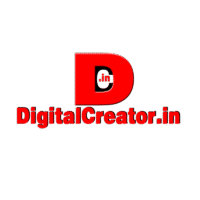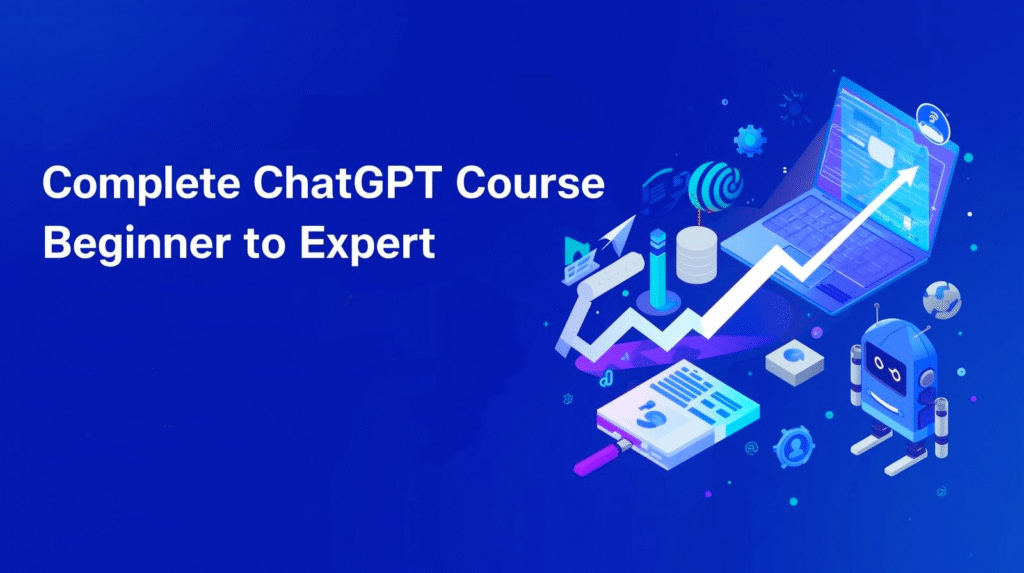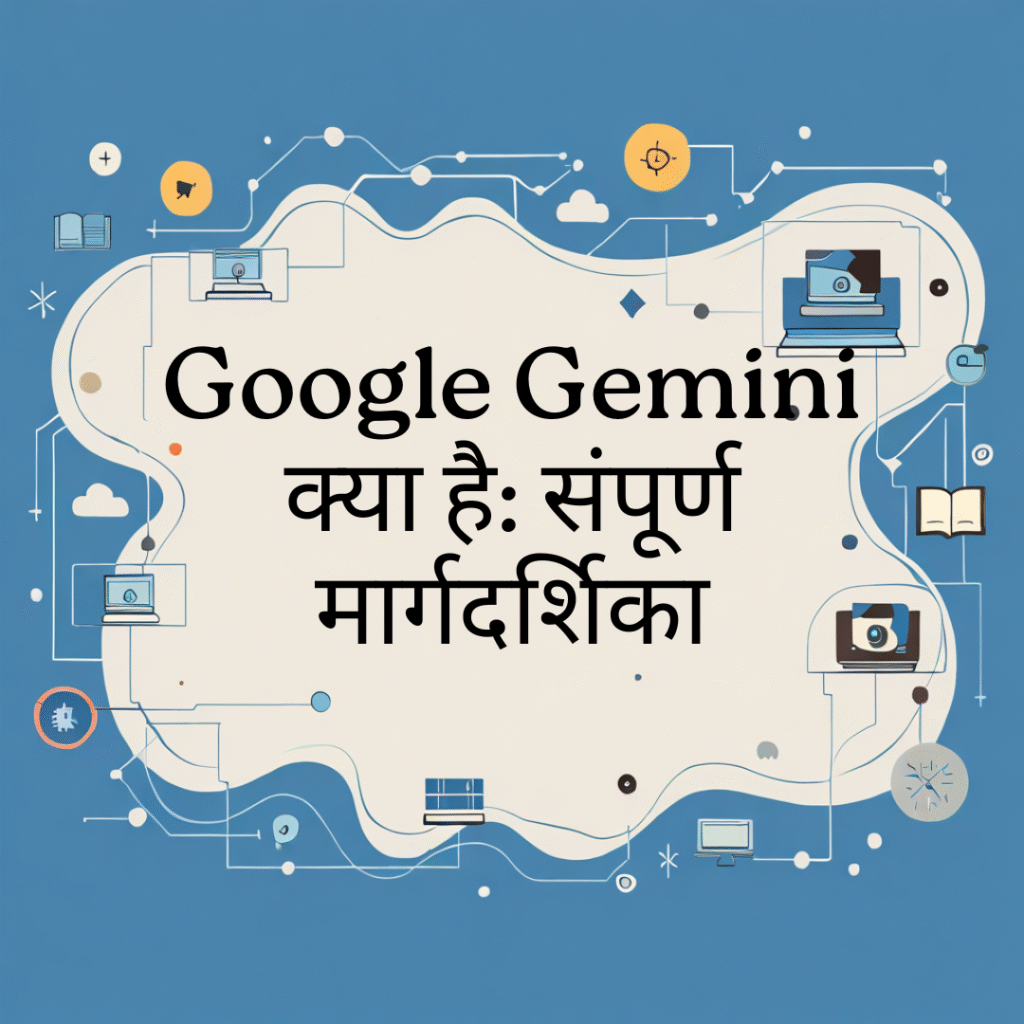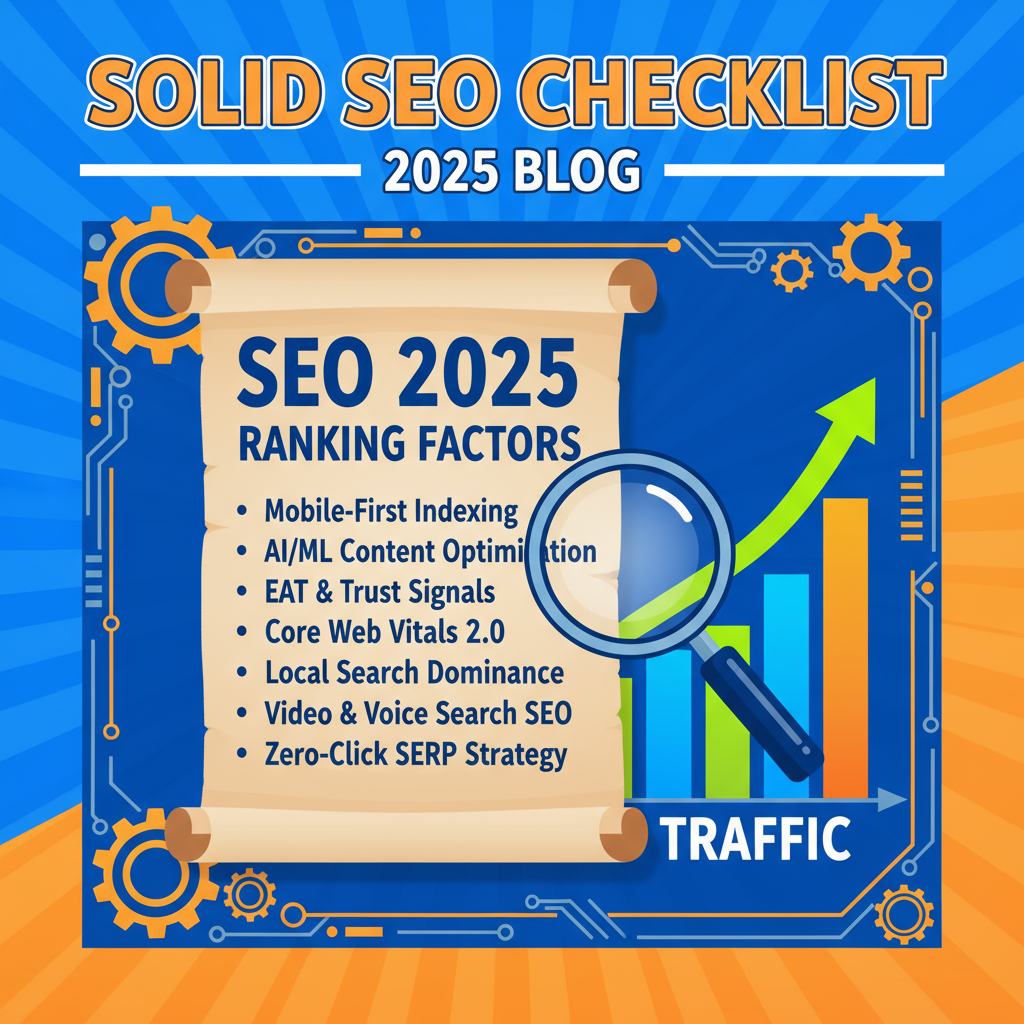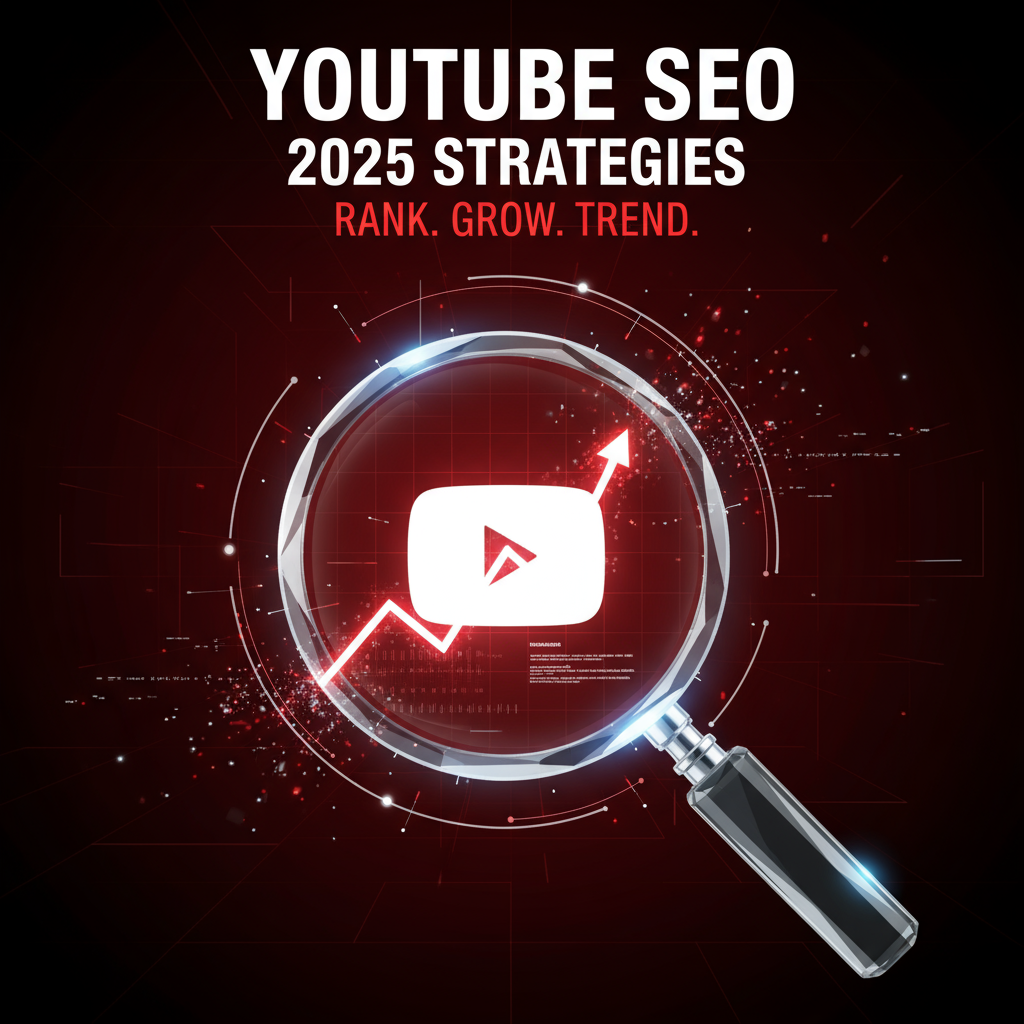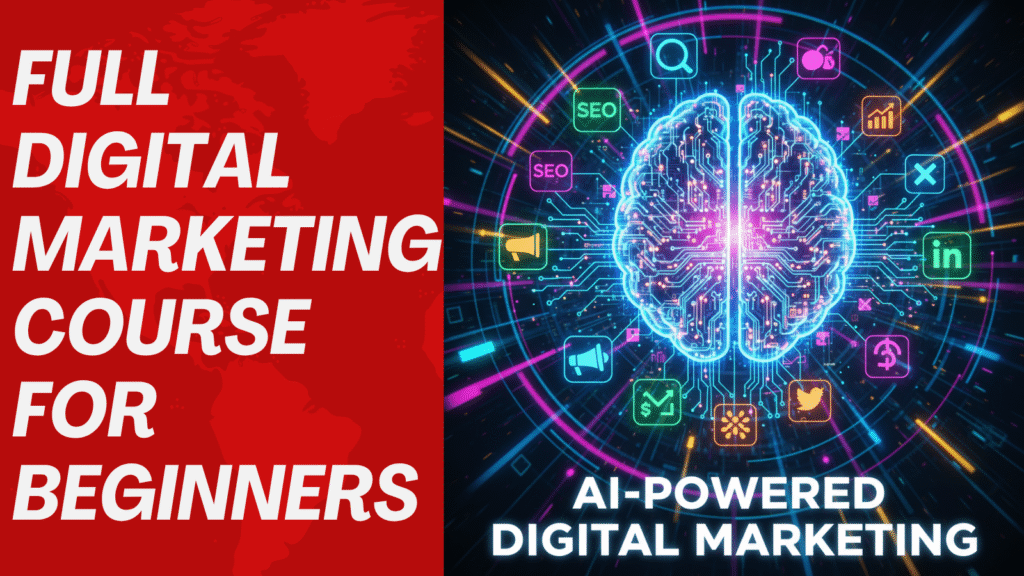
Digital Marketing full Course for Beginners
1. Introduction: Defining the Digital Landscape
1.1. What is Digital Marketing (The Modern Definition)?
1.2. Why Digital Marketing is Essential Today
1.3. The Core Difference: Traditional vs. Digital Marketing
2. The Foundational Pillars of Digital Marketing
2.1. Search Engine Optimization (SEO) 🔍
* 2.1.1. Technical SEO (Site Speed, Core Web Vitals)
* 2.1.2. On-Page SEO (Keywords, Content Quality)
* 2.1.3. Off-Page SEO (Backlinks and Authority)
2.2. Pay-Per-Click (PPC) Advertising 💰
* 2.2.1. Search Ads (Google Ads)
* 2.2.2. Display & Retargeting Campaigns
* 2.2.3. Key Metrics: CPC, CPA, and ROAS
2.3. Content Marketing ✍️
* 2.3.1. The E-E-A-T Framework (Experience, Expertise, Authority, Trust)
* 2.3.2. Types of Content (Blogs, Ebooks, Webinars, Case Studies)
* 2.3.3. Content Distribution Strategy
3. Core Customer Engagement Channels
3.1. Social Media Marketing (SMM) 📱
* 3.1.1. Organic Social Strategy (Community Building)
* 3.1.2. Paid Social Advertising (Targeting and Segmentation)
* 3.1.3. Platform Breakdown (Meta, LinkedIn, TikTok/Short-Form Video)
3.2. Email Marketing 📧
* 3.2.1. Lead Nurturing and Drip Campaigns
* 3.2.2. Segmentation and Personalization
* 3.2.3. Deliverability and A/B Testing
3.3. Affiliate and Influencer Marketing
* 3.3.1. Working with Micro vs. Macro-Influencers
* 3.3.2. Measuring Influencer ROI
4. Operational Strategy and Measurement
4.1. The Digital Marketing Funnel
* 4.1.1. Mapping Content to the Buyer Journey (ToFu, MoFu, BoFu)
4.2. Key Performance Indicators (KPIs) and Metrics
* 4.2.1. Acquisition Metrics (Traffic, Clicks, Leads)
* 4.2.2. Conversion Metrics (Conversion Rate, CPL, CPA)
* 4.2.3. Financial Metrics (CLV – Customer Lifetime Value, ROI)
4.3. Conversion Rate Optimization (CRO)
* 4.3.1. A/B Testing Landing Pages
* 4.3.2. User Experience (UX) Analysis (Heatmaps and Session Recordings)
5. The Digital Marketing Technology Stack (MarTech) ⚙️
5.1. Customer Relationship Management (CRM)
5.2. Data and Analytics Platforms
* 5.2.1. Web Analytics (Google Analytics)
* 5.2.2. Search Console and Technical Tools
5.3. Content Management Systems (CMS)
6. B2B vs. B2C Digital Marketing: Strategic Nuances 📊
6.1. B2B Focus: Long Cycles, High CLV, Lead Nurturing
6.2. B2C Focus: Short Cycles, Emotional Triggers, Conversion Velocity
6.3. Channel Priorities (Why LinkedIn matters for B2B; why TikTok matters for B2C)
7. AI-Powered Marketing, Automation, and Hyper-Personalization 🤖
7.1. Marketing Automation (MA) vs. AI Automation
7.2. Applications of AI in Digital Marketing
* 7.2.1. Generative AI for Content and Ad Copy
* 7.2.2. Predictive Bidding and Dynamic Creative Optimization (DCO)
* 7.2.3. Conversational AI and Chatbots
7.3. Data Integration: The Role of the Customer Data Platform (CDP)
8. Advanced Full-Funnel Strategy and Attribution 🧭
8.1. The Modern Marketing Flywheel Model (Attract, Engage, Delight)
8.2. Attribution Modeling in Detail
* 8.2.1. Single-Touch Models (First-Touch, Last-Touch)
* 8.2.2. Multi-Touch Models (Linear, Time Decay, U-Shaped)
* 8.2.3. The Power of Data-Driven (Algorithmic) Attribution
9. Legal, Ethical, and Security Considerations 🛡️
9.1. Data Privacy and Regulations
* 9.1.1. GDPR (General Data Protection Regulation)
* 9.1.2. CCPA/CPRA (California Consumer Privacy Act)
9.2. Email Compliance (CAN-SPAM/CASL)
9.3. Brand Safety and Ad Fraud Prevention
10. The Future of Digital: Search, Immersive Experiences, and Privacy 🔮
10.1. The Evolution of Search (Beyond 10 Blue Links)
* 10.1.1. Zero-Click Search and AI Overviews
* 10.1.2. Voice and Visual Search Optimization
10.2. Immersive Experiences and Social Commerce
* 10.2.1. Social Commerce and Integrated Shopping
* 10.2.2. AR/VR Marketing and Phygital Experiences
10.3. The Privacy-First Digital Ecosystem
* 10.3.1. The End of Third-Party Cookies
* 10.3.2. The Critical Importance of First-Party Data
11. Conclusion: Staying Ahead in a Changing World
11.1. Key Takeaways for Today’s Marketer
11.2. The Mindset of Continuous Learning
1. What is Digital Marketing? The Ultimate, In-Depth Guide to Driving Sales and Growth in the Modern Era
🌟 Introduction: The Revolution of the Digital Age
In a world where the majority of commercial and social interactions take place online, Digital Marketing is not just an option—it is the foundation of modern business success. It is the practice of promoting products, services, or brands using the internet and other electronic devices, connecting businesses with their target audiences where they spend most of their time: online.
Moving far beyond simple banner ads, digital marketing is a complex, data-driven ecosystem that allows for unprecedented levels of targeting, personalization, and measurable Return on Investment (ROI). This comprehensive guide is designed to dismantle the digital marketing landscape, exploring every major component, strategy, and best practice you need to know to not only understand this field but to master it and drive significant growth.
1.1. Defining Digital Marketing: Beyond the Basics
At its core, digital marketing encompasses all marketing efforts that use an electronic device or the internet. It leverages digital channels such as search engines, social media, email, and websites to connect with current and prospective customers.
- Traditional Marketing: Generally static, hard to measure, and relies on channels like print, radio, and television.
- Digital Marketing: Highly dynamic, precisely measurable, and utilizes interactive, real-time channels.
The power of digital lies in its measurability and the ability to track the Customer Value Journey (CVJ) from initial awareness to final purchase and advocacy.
1.2. The Foundational Pillars of Digital Success
A successful digital strategy is built on three core pillars: Audience, Channels, and Data.
- Audience: Deeply understanding the customer through personas, psychographics, and pain points.
- Channels: Selecting and mastering the specific digital platforms (SEO, PPC, Social Media, etc.) where your audience interacts.
- Data: Utilizing analytics to measure performance, refine strategies, and prove ROI.
2. The Core Components of Digital Marketing (The 8 Essential Channels)
Digital marketing is an umbrella term for several specialized disciplines, each offering a unique way to connect with the consumer. To create a cohesive strategy, you must understand the depth and function of each major component.
2.1. Search Engine Optimization (SEO)
SEO is the process of optimizing your website to rank higher in search engine results pages (SERPs) like Google, Bing, and others, thereby increasing the quantity and quality of organic (non-paid) traffic to your site. This is a crucial, long-term asset for any business.
2.1.1. The Three Pillars of SEO
- Technical SEO: This pillar focuses on the back-end structure of your website, ensuring search engine bots can efficiently crawl and index your content.
- Key Elements: Mobile-friendliness, site speed/Core Web Vitals, site architecture (sitemaps and robots.txt), schema markup, and secure hosting (HTTPS).
- The Goal: To ensure a frictionless experience for both users and search engine crawlers.
- On-Page SEO: This involves optimizing the content and HTML source code of a specific page.
- Key Elements: High-quality, in-depth content, strategic use of the target keyword, optimizing the SEO Title Tag, Meta Description, URL structure, and Header tags (H1,H2,H3).
- The Goal: To clearly signal to search engines what the page is about and how it satisfies user intent.
- Off-Page SEO (Link Building): This involves actions taken outside of your own website to impact your SERP rankings.
- Key Elements: Backlinks (links from other reputable websites pointing to yours), domain authority, brand mentions, and social signals.
- The Goal: To establish your website’s authority, trustworthiness, and relevance in your industry.
2.2. Pay-Per-Click (PPC) Advertising (Search Engine Marketing – SEM)
PPC is a model of internet marketing where advertisers pay a fee each time one of their ads is clicked. It is an immediate, scalable method for driving targeted traffic to a website. The most common form is Google Ads, which places ads at the top of the SERP.
2.2.1. Key PPC Concepts
- Keyword Bidding: Advertisers bid on keywords relevant to their product/service. The highest bid doesn’t always win; the ad’s quality is also a major factor.
- Quality Score (QS): A Google metric (1-10) that estimates the quality and relevance of your ads, keywords, and landing pages. A higher QS leads to lower costs and better ad positions.
- Formula: Quality Score ∝ Ad Relevance+Landing Page Experience+Expected CTR
- Ad Formats: Includes Search Ads (text only), Display Ads (visual banners across the Google Display Network), and Video Ads (YouTube).
- Retargeting/Remarketing: A tactic that shows ads specifically to users who have previously visited your website but did not convert.
2.3. Content Marketing
Content Marketing is the creation and distribution of valuable, relevant, and consistent content to attract and retain a clearly defined audience—and, ultimately, to drive profitable customer action. Content is the fuel for every other digital marketing component.
2.3.1. Content Formats and the Buyer’s Journey
Content must be mapped to the three stages of the modern buyer’s journey:
- Awareness (TOFU – Top of Funnel): The user recognizes they have a problem.
- Content: Blog posts, Infographics, Social Media Posts, Educational Videos.
- Consideration (MOFU – Middle of Funnel): The user researches solutions to their problem.
- Content: E-books, Whitepapers, Webinars, Comparison Guides, Expert Interviews.
- Decision (BOFU – Bottom of Funnel): The user is ready to choose a product or service.
- Content: Case Studies, Testimonials, Product Demos, Free Trials, Pricing Guides.
2.4. Social Media Marketing (SMM)
SMM involves creating and sharing content on social media platforms to achieve branding and marketing goals. It focuses heavily on engagement, brand building, and community management.
2.4.1. Organic vs. Paid Social
- Organic Social: Posting free content, engaging with followers, and building a community. Focuses on long-term relationship building and brand loyalty.
- Paid Social: Running targeted advertisements (e.g., Facebook/Instagram Ads, TikTok Ads) to reach specific demographic, interest, and behavior-based audiences for immediate results (traffic, conversions, leads).
2.5. Email Marketing
Email marketing is the use of email to promote products or services while developing relationships with potential customers. It remains one of the highest ROI channels.
2.5.1. Core Campaign Types
- Newsletters: Regular communication to provide value and maintain brand awareness.
- Nurture Sequences: Automated series of emails designed to educate and warm up new leads over time, guiding them toward a purchase.
- Transactional Emails: Notifications related to a purchase or account activity (e.g., order confirmation, shipping updates).
- Abandoned Cart Emails: The single most effective type of email, sent to users who added items to their cart but left the site without purchasing.
2.6. Affiliate Marketing
Affiliate marketing is a performance-based system where a business rewards one or more affiliates for each visitor or customer brought by the affiliate’s own marketing efforts. This is a low-risk, high-reward strategy as payment is only made upon a successful conversion.
2.7. Conversion Rate Optimization (CRO)
CRO is the systematic process of increasing the percentage of website visitors who take a desired action—be that filling out a form, signing up for a newsletter, or making a purchase. It is focused on getting more value from the existing traffic.
2.7.1. CRO Methodology
CRO is driven by data, testing, and hypothesis:
- Data Collection: Analyzing visitor behavior using tools like heatmaps, session recordings, and Google Analytics.
- Hypothesis Formulation: “If we change X, Y will happen because Z.”
- A/B Testing: Simultaneously running two versions of a web page (A and B) to see which one performs better.
- Analysis and Implementation: Adopting the winning variation and then starting the process over again.
2.8. Marketing Analytics and Data
This is the process of managing, measuring, and analyzing the performance of all marketing initiatives. Data is the lifeblood of digital marketing, proving ROI and informing future strategy.
2.8.1. Key Metrics (KPIs)
- SEO: Organic Traffic, Keyword Ranking Position, Bounce Rate, Domain Authority.
- PPC: Click-Through Rate (CTR), Cost Per Click (CPC), Conversion Rate, Return on Ad Spend (ROAS).
- Email: Open Rate, Click Rate (CTR), Unsubscribe Rate.
- Website/CRO: Conversion Rate, Time on Page, Funnel Drop-off Rate.
- Core Business Metrics: Customer Acquisition Cost (CAC), Customer Lifetime Value (CLV).
3. The Digital Marketing Strategy Framework (Building Your Blueprint)
A scattershot approach to the channels above will fail. Success requires a structured, multi-step strategy built around the customer.
3.1. Step 1: Defining Your Business Goals (The North Star)
All digital marketing goals must be S.M.A.R.T. (Specific, Measurable, Achievable, Relevant, Time-bound).
| Goal Type | Example Goal | Supporting Metric |
| Awareness | Increase brand mentions on social media by 25% in the next quarter. | Brand Mentions, Total Impressions. |
| Lead Generation | Generate 500 Marketing Qualified Leads (MQLs) from the blog in Q4. | Form Submissions, Cost Per Lead (CPL). |
| Sales/Revenue | Increase e-commerce revenue from email marketing by 15% this year. | ROAS, Total Revenue from Email Campaigns. |
| Customer Loyalty | Increase Customer Lifetime Value (CLV) by 10% through new customer service content. | Repeat Purchase Rate, CLV. |
3.2. Step 2: Developing Detailed Buyer Personas
A buyer persona is a semi-fictional representation of your ideal customer based on market research and real data about your existing customers.
| Persona Component | Detail/Example | Impact on Strategy |
| Demographics | 35-45 years old, lives in major metropolitan area, has a small business. | Informs ad targeting (PPC/Social), language, and tone. |
| Pain Points | “Struggles to find the time to create consistent content.” | Informs Content Strategy (create ‘time-saving’ guides) and SEO keywords. |
| Goals | “Wants to increase organic traffic by 50% in 12 months.” | Informs service/product messaging (focus on “50% increase in traffic”). |
| Media Habits | Spends 4 hours a day on LinkedIn and searches Google 5+ times a day. | Dictates Channel Strategy (prioritize LinkedIn Ads and SEO/PPC). |
3.3. Step 3: Mapping the Customer Value Journey (CVJ)
The CVJ is an 8-stage process that a prospect goes through to become a raving fan. Your entire digital strategy must align with these steps:
- Aware: The prospect becomes aware of your brand (usually via SEO, Social, or PPC).
- Engage: They begin to consume your content (Content Marketing).
- Subscribe: They give you permission to contact them (Email Marketing, Lead Magnets).
- Convert: They make a small commitment (CRO, Tripwire Offer).
- Excite: They have a great initial experience.
- Ascend: They become a repeat, high-value customer (Email, Loyalty Programs).
- Advocate: They recommend your brand to others (Social Sharing, Testimonials).
- Promote: They actively market your brand for you (Affiliate Marketing, Influencer Programs).
3.4. Step 4: Budget Allocation and Channel Selection
Based on your goals and persona habits, you must strategically allocate resources. A balanced approach typically involves investing in both Inbound (organic, long-term, relationship-driven) and Outbound (paid, short-term, immediate impact) strategies.
- High Awareness Focus? Invest heavily in Social Media and SEO Content.
- High Sales Focus? Invest heavily in PPC, CRO, and Email Retargeting.
4. Advanced Digital Marketing Topics and Future Trends
To remain competitive, marketers must look beyond the fundamentals and embrace cutting-edge techniques and evolving technologies.
4.1. Marketing Automation
Marketing automation uses software to automate repetitive marketing tasks such as email sequencing, social media posting, lead scoring, and customer data management. This allows marketers to nurture thousands of leads with personalized content efficiently.
- Key Tools: HubSpot, Marketo, Pardot, Mailchimp.
- Impact: Reduces manual effort, increases lead conversion rates, and ensures consistent follow-up.
4.2. Artificial Intelligence (AI) and Machine Learning (ML)
AI is the single most transformative force in digital marketing today, influencing both strategy and execution.
| AI Application | Impact on Digital Marketing |
| Content Generation | Drafts blog outlines, ad copy, email subject lines, and even video scripts at scale. |
| Hyper-Personalization | ML algorithms analyze real-time user behavior to dynamically change website content, ad creatives, and product recommendations for each individual visitor. |
| PPC Optimization | Google’s AI (Performance Max) automates bidding, audience targeting, and creative selection to maximize conversion value based on set goals. |
| Predictive Analytics | AI can forecast which leads are most likely to convert, allowing sales teams to prioritize high-value prospects. |
4.3. Video Marketing and Short-Form Content
Platforms like TikTok, YouTube Shorts, and Instagram Reels have made video the dominant content format.
- Strategy: Repurpose long-form content (like this guide) into dozens of short, engaging video clips that capture attention and drive users to longer-form resources.
- SEO: YouTube is the second-largest search engine. Video optimization (titles, tags, transcripts) is critical for traffic.
4.4. Voice Search Optimization (VSO)
As smart speakers (Alexa, Google Home) and mobile voice assistants become commonplace, SEO shifts from desktop keywords to conversational queries.
- Focus: Optimize for long-tail keywords and natural language questions (e.g., “What is the best digital marketing agency in Delhi?” instead of “digital marketing agency delhi”).
- Goal: Aim for the Google Featured Snippet or the “Zero Position,” as this is often the single answer read out by a voice assistant.
5. Overcoming Digital Marketing Challenges and Measuring ROI
5.1. The Data Attribution Challenge
In a multi-channel world, determining exactly which touchpoint deserves credit for a sale is complex. Was it the first search ad click (First-Touch Attribution), the final email (Last-Touch Attribution), or a combination of both?
- Solution: Use Multi-Touch Attribution Models (e.g., Linear, Time Decay, or Position-Based) in Google Analytics or a CRM to accurately distribute credit across all channels, giving a true picture of each channel’s contribution to revenue.
5.2. Proving ROI (Return on Investment)
Digital marketing’s greatest strength is its measurability, but that measurement must connect to actual business profit.
ROI=Marketing Cost(Sales Growth−Marketing Cost)×100
- Example: If your PPC campaign cost $5,000 and generated $15,000 in sales:
ROI=$5,000($15,000−$5,000)×100=200%
This means for every dollar spent, you earned two dollars back in profit.
5.3. The Importance of Testing and Iteration
The digital landscape is constantly changing due to algorithm updates (Google), feature changes (Social Media), and consumer trends. The most successful marketers adopt a philosophy of continuous improvement.
- Test Everything: Never assume your headline, button color, or audience targeting is perfect. Run A/B tests on landing pages, subject lines, and ad copy constantly.
- Stay Agile: Be prepared to pivot your budget and strategy quickly in response to data and new platform updates.
6. Conclusion: The Ever-Evolving Frontier
Digital marketing is the essential language of commerce in the 21st century. It is a powerful, integrated discipline that combines technical skill (SEO/PPC), creative genius (Content/Social), and analytical rigor (Data/CRO) to deliver predictable and scalable business growth.
By dedicating yourself to understanding the core components—from the long-term asset of SEO to the immediate impact of PPC and the relationship power of Email—and by embracing the future with tools like AI, you transform your marketing from a cost center into a powerful, quantifiable revenue engine. The ultimate guide is merely a starting point; your success depends on your commitment to continuous learning and relentless iteration in the dynamic digital world.
7. The Digital Marketing Technology Stack (MarTech) ⚙️
Digital marketing is impossible without the right tools and software. A MarTech Stack is the collection of technologies marketers use to run, manage, and analyze their digital campaigns. Understanding these tools is essential to efficient scaling and data management.
7.1. Customer Relationship Management (CRM)
The CRM is the central database where all customer and prospect data is stored and managed. It is the single source of truth that links marketing activities to sales outcomes.
- Function: Stores contact information, tracks all interactions (emails, web visits, calls), and enables segmentation for personalized campaigns.
- Key Insight: Marketing automation tools and ad platforms typically integrate with the CRM to track a lead from their first click (marketing) to their final purchase (sales).
7.2. Data and Analytics Platforms
These tools are crucial for turning raw data into actionable insights.
- Web Analytics (e.g., Google Analytics): Measures website traffic, user behavior, conversions, and acquisition channels. It answers where users came from and what they did.
- Search Console (e.g., Google Search Console): Focuses specifically on organic search performance. It reveals the keywords users searched to find your site, your average ranking position, and any technical errors.
- Business Intelligence (BI) Tools: Aggregates data from multiple sources (CRM, Google Ads, Analytics) into visual dashboards to track high-level KPIs and ROI.
7.3. Content Management Systems (CMS)
The foundation of your online presence, the CMS is the software used to create and manage your website content.
- Examples: WordPress, HubSpot CMS, Drupal, Shopify (for e-commerce).
- Relevance: The CMS heavily impacts your Technical SEO performance, site speed, and mobile-friendliness.
8. B2B vs. B2C Digital Marketing: Strategic Nuances 📊
While the core channels remain the same (SEO, PPC, Social), the execution and focus shift dramatically depending on whether you sell to Businesses (B2B) or Consumers (B2C).
| Feature | B2B (Business-to-Business) | B2C (Business-to-Consumer) |
| Sales Cycle | Long and complex (months to years). | Short and emotional (minutes to days). |
| Buyer Persona | Rational decision-makers, multiple stakeholders (buying committee). | Individual end-users driven by immediate need, feeling, or price. |
| Content Focus | Educational, logical, value-driven. Focuses on ROI, efficiency, and whitepapers. | Entertaining, emotional, aspirational, and trend-driven (short videos). |
| Core Channels | LinkedIn (for professional targeting), SEO (for pain point solutions), Email Nurturing. | Instagram/TikTok (for visual/trend), Facebook (for audience scale), PPC (immediate conversions). |
| Success Metric | Marketing Qualified Leads (MQLs), Pipeline Value, Customer Lifetime Value (CLV). | Volume of Sales, Click-Through Rate (CTR), Social Engagement. |
| Conversion | A demo request, a free trial signup, or a consultation call. | An immediate e-commerce purchase or app download. |
Strategic Takeaway: A B2B campaign should prioritize lead nurturing and thought leadership (SEO/Content), while a B2C campaign should prioritize mass reach and conversion velocity (Social/PPC).
9. Legal, Ethical, and Security Considerations 🛡️
As data collection becomes more sophisticated, digital marketers bear a greater responsibility to respect privacy and adhere to laws. Failure to comply can result in massive fines and permanent brand damage.
9.1. Data Privacy and Regulations
- GDPR (General Data Protection Regulation): Affects any business marketing to or collecting data on citizens in the European Union. Requires explicit, informed consent for data processing and gives users the “right to be forgotten.”
- CCPA/CPRA (California Consumer Privacy Act): Gives California residents greater control over their personal information, including the right to opt-out of the sale of their data.
- Impact on MarTech: Requires businesses to maintain detailed records of consent, provide clear privacy policies, and use cookie banners that allow users to manage their tracking preferences.
9.2. Email Compliance (CAN-SPAM/CASL)
All commercial emails must comply with anti-spam laws.
- Requirement: Include a physical mailing address in every email and provide a clear, one-click unsubscribe link that is honored promptly.
9.3. Brand Safety and Ad Fraud
Ensuring your paid ads appear in reputable environments and that you are not being charged for fake clicks is an ongoing challenge.
- Brand Safety: Using programmatic advertising tools to prevent your ads from appearing next to objectionable or inappropriate content.
- Ad Fraud: Using specialized software to detect and filter out non-human, bot-generated traffic that drains ad budgets without providing real value.
10. AI-Powered Marketing, Automation, and Hyper-Personalization 🤖
The integration of Artificial Intelligence (AI) and Machine Learning (ML) is the single biggest shift in digital marketing. These technologies move marketing from static, rule-based systems to dynamic, predictive, and truly personalized experiences at scale.
10.1. Marketing Automation (MA) vs. AI Automation
- Traditional MA: Follows pre-set rules. Example: “IF a user downloads the eBook, THEN send Email Sequence A.” It saves time by scheduling and executing workflows.
- AI Marketing Automation: Learns and optimizes outcomes. Example: An AI model analyzes real-time behavior (time of day, device, recent activity) and determines the “Next Best Action” for an individual—whether that’s an email, a personalized ad, or a chatbot interaction—to maximize conversion probability.
10.2. Applications of AI in Digital Marketing
| Function | AI Capability | Strategic Impact |
| Content | Generative AI (ChatGPT, Midjourney) for draft creation, tone adaptation, and title generation. | Rapidly accelerate the content pipeline and scale translation/localization. |
| Paid Media | Predictive Bidding and Dynamic Creative Optimization (DCO). | Automatically adjusts ad spend and swaps out elements (images, headlines) in real-time to maximize ROAS. |
| Personalization | Recommendation Engines and Predictive Analytics. | Deliver true Hyper-Personalization, showing unique product suggestions, website layouts, or checkout flows to each user. |
| Analytics | Anomaly Detection and Attribution Modeling. | Flags campaigns suddenly underperforming and automates complex Multi-Touch Attribution (MTA) reporting. |
| Customer Service | Sophisticated Chatbots and Conversational AI. | Provide instant, human-like support, qualifying leads 24/7 and deflecting common service queries. |
10.3. Data Integration: The Role of the CDP
To power AI and personalization, all data must be clean and unified. The Customer Data Platform (CDP) is the critical piece of the MarTech stack that achieves this.
- Function: Ingests data from all sources (CRM, website, social media, transactions) and stitches it together to create a Single Customer View (SCV).
- Significance: This unified profile is what enables marketers to execute true cross-channel, hyper-personalized campaigns, ensuring a customer who just bought a product online doesn’t immediately see an ad trying to sell them that same product.
11. Advanced Full-Funnel Strategy and Attribution 🧭
Moving beyond vanity metrics like ‘likes’ or ‘impressions’ requires a strategic focus on the entire customer journey and sophisticated methods for assigning credit to marketing efforts.
11.1. The Modern Marketing Funnel (Flywheel Model)
The traditional linear Funnel (Awareness → Interest → Desire → Action) is often replaced by the Flywheel Model, which emphasizes Customer Retention and Advocacy as the core drivers of growth.
- Attract: SEO, Content, Social Media (Top-of-Funnel).
- Engage: Email Marketing, Webinars, Remarketing, Sales Nurturing (Middle-of-Funnel).
- Delight: Customer Service, Loyalty Programs, Community Management (Bottom-of-Funnel/Advocacy).
The key is using the momentum of delighted customers to attract new prospects (referrals, reviews). Marketing is responsible for all three stages, not just the top.
11.2. Attribution Modeling in Detail
Attribution is the process of determining which touchpoints get credit for a conversion. As the customer journey involves 6-10 touchpoints, single-touch models are obsolete.
| Model | Description | Use Case |
| First-Touch | Gives 100% of the credit to the very first channel (e.g., the initial Google search). | Good for measuring Awareness channels. |
| Last-Touch | Gives 100% of the credit to the final channel (e.g., the final retargeting ad). | Good for measuring channels that drive immediate conversions (e.g., branded PPC). |
| Linear | Distributes credit equally across all touchpoints in the journey. | Good for understanding the average contribution of all channels. |
| Time Decay | Assigns more credit to touchpoints that occurred closer to the conversion event. | Good for long sales cycles where the most recent interactions are most impactful. |
| Data-Driven (Algorithmic) | Uses Machine Learning to calculate the actual contribution of each touchpoint based on your unique customer data. | The most accurate model, providing the clearest view of ROI across the complex, full funnel. |
Strategic Takeaway: Modern marketers must select an attribution model that aligns with their business goals, often moving toward the AI-powered Data-Driven model to accurately allocate budget.
12. The Future of Digital: Search, Immersive Experiences, and Privacy 🔮
The digital landscape is constantly changing, driven by new privacy regulations and emerging technologies that redefine how consumers interact with content and commerce.
12.1. The Evolution of Search (Beyond 10 Blue Links)
Search is moving away from simple web page links to rich, integrated, and conversational answers.
- Zero-Click Searches: Users get their answer directly on the Search Engine Results Page (SERP) via Featured Snippets, Knowledge Panels, or AI Overviews. Marketers must optimize content specifically to secure these spots for brand visibility.
- Visual & Voice Search: The rise of smart speakers and image recognition means SEO must expand:
- Voice: Target long-tail, conversational keywords (e.g., “What’s the best local coffee shop open now?”).
- Visual: Optimize images with descriptive file names, high-quality resolution, and proper alt text for platforms like Google Lens or Pinterest.
12.2. Immersive Experiences and Social Commerce
The line between social media, entertainment, and e-commerce is vanishing, leading to new opportunities for engagement.
- Social Commerce: The ability to discover, research, and purchase a product without ever leaving the social platform (Instagram/TikTok Shop). This requires an integrated product catalog and seamless checkout functionality.
- AR/VR Marketing (The Metaverse): Brands are using Augmented Reality (AR) filters (e.g., virtual try-ons for makeup/clothing) and Virtual Reality (VR) experiences (e.g., virtual showroom tours) to blend the digital and physical shopping experience (Phygital).
12.3. The Privacy-First Digital Ecosystem
The global push for user data control is forcing a fundamental change in how marketers operate.
- The End of Third-Party Cookies: Web browsers are phasing out third-party cookies, which traditionally tracked users across different websites for ad targeting.
- The Rise of First-Party Data: This shift makes the collection and use of First-Party Data (data you own, like email lists, purchase history, and website interactions) absolutely critical. Your success will depend on your ability to:
- Incentivize users to willingly share their data (e.g., via valuable content or loyalty programs).
- Centralize that data in a CDP/CRM.
- Activate it for personalized marketing and advertising (e.g., using your customer email list for “Customer Match” ad targeting).
This makes trust and transparency the ultimate competitive advantage.
